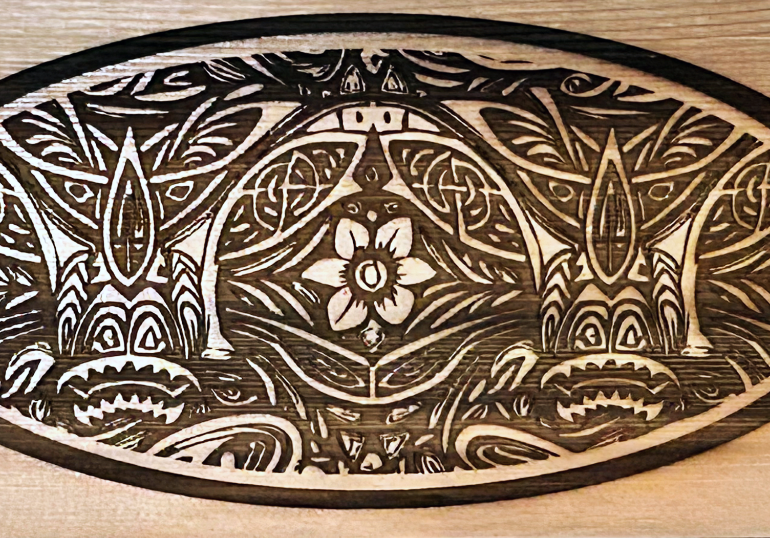In the sacred confluence of heritage and heartwood, where ancestral voices find new resonance through flame’s testimony, “Twin Tiki” emerges as both bridge and beacon. Here, upon reclaimed cedar’s patient canvas—each ring a chapter in the Pacific Northwest’s endless chronicle—three cultural rivers converge in a dance of perpetual becoming.
The burning tool becomes more than mere instrument; it transforms into a translator of ancient tongues, each stroke a syllable in a language that speaks across centuries. Pacific Islander motifs flow into the fluid narratives of Coastal Native design with the same inevitability as tides meeting shoreline, their shared reverence for ocean’s wisdom creating harmonies that transcend geographical boundaries.
Celtic knots, those eternal witnesses to interconnection’s profound truth, weave themselves through this dialogue with the graceful insistence of memories refusing to fade. Their intricate patterns speak to the way all traditions, when honored with sufficient depth, reveal themselves as tributaries of the same vast river of human expression.
The cedar itself participates in this convergence, its grain lines offering their own ancient calligraphy to the composition. Each whorl and wave in the wood’s surface becomes a note in this visual symphony, a reminder that nature herself has always been the first artist, the first storyteller, the first keeper of sacred geometries.
Through fire’s transformative touch, these distinct cultural voices find common ground in the language of symbol and shadow. Tiki forms acquire the fluid movement of salmon in Northwest Native art, while Celtic spirals echo the waves that have carried countless voyagers across vast oceanic expanses. Here, in this marriage of traditions, we find testimony to the way human creativity transcends the artificial boundaries of time and territory.
The reclaimed wood itself becomes metaphor—how materials, like traditions, can be renewed without losing their essential character, how the past never truly fades but rather transforms itself into foundation for future expressions. Each burn mark writes its story not just upon the surface but deep into the wood’s memory, creating permanent testimony to the way cultures, like rivers, inevitably find their way to each other’s shores.
In this sacred space between intention and emergence, “Twin Tiki” stands as witness to the eternal truth that all traditions spring from the same well of human yearning—to make meaning, to leave marks, to speak across generations in languages both ancient and eternally new.
